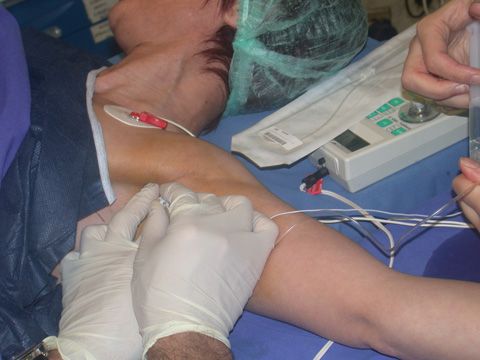Regional Anesthesia
Regional anesthesia(supraclavicular or axillary block) aims to to stop motor and sensory functions temporarily by medication applied to locations close to main nerves. Nerves are defined using ultrasound or nerve stimulators. The patient does not take the risks of general anesthesia with this method. Anesthesia continues about 5-8 hours after surgery. This way, early postoperative pain is subsided. Like local anesthesia, the patient may eat and drink just after surgery. If the patient want to sleep during the surgery sedative drugs may be applied. Local catheters can be put around these nerves. So, continous analgesia can be obtained for several days if indicated. Some surgeries like replantations and revascularizations may need to improve blood circulation after surgery. Some medication which can be given via this catheter help to support repaired vessels with surgery. The patient is hospitalized until the patient feels his or her hand. Complications are rare after axillary block anesthesia. Insufficient level of anesthesia, pain, bruisings around injection sites are the most common ones. Supraclavicular, interscalenous, infraclavicular, elbow level blocks are among the methods used in upper extremity regional anesthesia.
General Anesthesia
The patient is intubated and put into sleep. 5-8 hours of fasting is required before the surgery. Risks are relatively more compared to regional anesthesia. It is generally used in children and adult patients who are psychologically not suitable for other methods. Eating and drinking are allowed for 4 hours after surgery.









